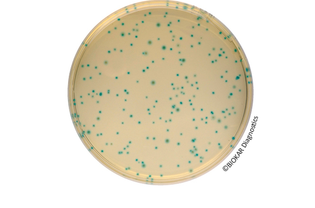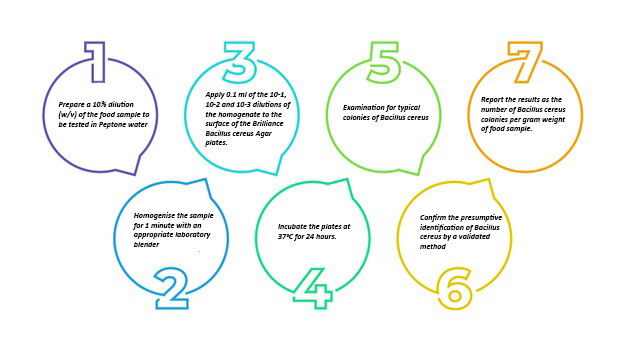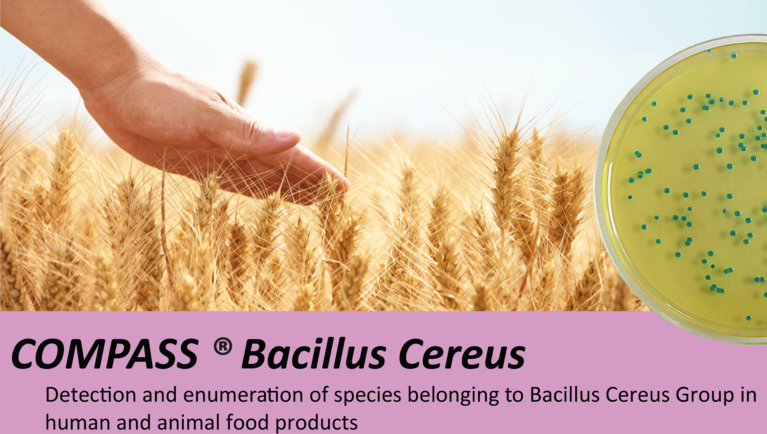The COMPASS ® Bacillus Cereus Agar
COMPASS® Bacillus Cereus Agar is a solid medium used for the detection and enumeration of spores and vegetative forms of presumptive species belonging to the group Bacillus cereus in products intended for human and animal consumption.
Detection or enumeration may be carried out directly on this medium without any purification steps, biochemical confirmation (glucose fermentation, Voges-Proskauer, nitrate reduction and haemolysis tests) and/or microscopic examination normally carried out within the limits of standardised methods.
The advantages
1. Reliable:
- Validated method by AFNOR Certification according to NF EN ISO 16140
2. Performance:
- Excellent recovery of vegetative and spore form
- Specific detection of Bacillus cereus, including strains which are weak or negative for lecithinase production
3. Easy:
- Characteristic green colony colour and excellent inhibition of secondary flora
4. Quick and Economic:
- Detection and counting within 24 hours on 1 plate without confirmation

The following products are available
Compass ® Bacillus Cereus Agar
BM12608 – 20 Petri dishes (Ø90mm)
Compass ® Bacillus Cereus Agar (base)
Compass ® Bacillus Cereus Agar Selective Supplements
Useful to know
- BPW, Tryptone salt or any other diluent recommended in the corresponding section of the standard NF EN ISO 6887.
- Prepare COMPASS® Bacillus cereus medium with one vial of base and one vial of selective supplement
- Count petri dishes containing less than 150 characteristic colonies.
The technique
Note: The following is only intended as a suggested method of use.

- Prepare a 10% dilution (w/v) of the food sample to be tested in Peptone water.
- Homogenise the sample for 1 minute using an appropriate laboratory blender.
- Apply 0.1 ml of the 10-1, 10-2 and 10-3 dilutions of the homogenate to the surface of the Brilliance Bacillus cereus Agar plates.
- Incubate the plates at 37°C for 24 hours.
- Examine for typical colonies of Bacillus cereus.
- Confirm the presumptive identification of Bacillus cereus by a validated method.
- Report the results as the number of Bacillus cereus colonies per gram weight of food sample

